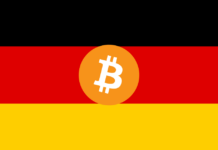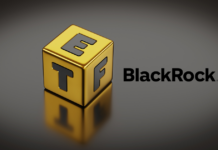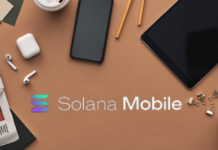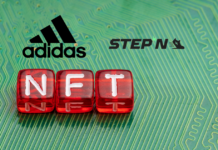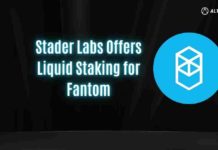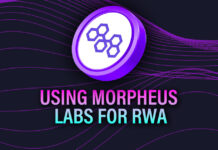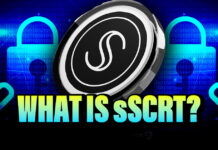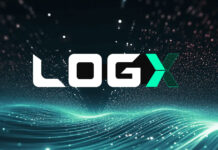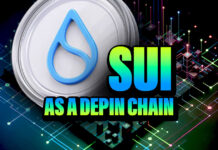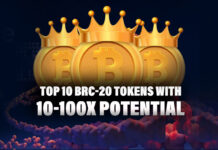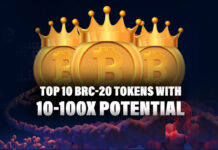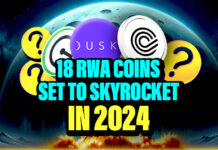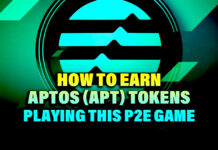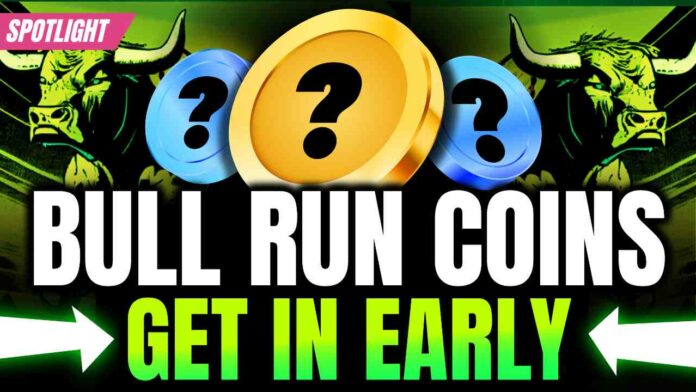Be early! One of the very best ways to make good profits is to get in early. I will show you why. If you got in early on, for example, Solana (SOL), the price at the initial seed sale was $0.04. Now it’s $22.55. That’s a 56,275% increase, or a x555. However, the ATH was $260. That’s another x11 from the current price. But it’s a 649,900% increase from the initial seed price.
Being early is crucial. Having diamond hands is also important. You need to know when to sell. Or sell at a price that you’re comfortable with. But looking for these Altcoin GEMS takes a lot of time and experience. That’s why my research team and I have found three high potential coins and future altcoin gems for you. We have done the hard work for you. The following projects don’t have coins or tokens yet! So, keep watching until the end, to see my choices.
#1 Scroll
Scroll is a layer 2 solution for Ethereum and one of the altcoin gems. The layer 2 narrative is a successful one. I’m sure you heard of Polygon, Optimism, and Arbitrum. These are three popular L2 solutions. However, Scroll is a native zkEVM layer 2 solution.
In other words, it’s a zero-knowledge Ethereum Virtual Machine. As an EVM, it’s compatible with many chains. It generates zero knowledge proofs that verifies that transactions are correct. This happens in a way that you don’t expose important information. Scroll uses zk-Roll Ups for this.
Scroll is a bytecode compatible zkEVM.
Bytecode compatibility means:
– Solidity, Vyper, and Huff work out of the box
– No re-auditing necessary
– Most existing tooling is inherited
– Near-identical UX and DevX as Ethereum— pseudo 📜 (@pseudotheos) April 6, 2023
As a result, Scroll will offer:
- A decentralized environment.
- Unlimited scalability.
- Lightning-fast confirmation latency. To keep it simple, the time it takes between submitting and confirming a transaction.
- Trustless privacy. In other words, you don’t need a third party. For instance, for transactions.
To achieve this, Scroll uses a new, faster system to organize the zero-knowledge prove transactions. Currently, Scroll is on the testnet. In other words, the main net is coming soon. However, you can join their Alpha testnet. Have some fun with the Scroll bridges.
Scroll Testnet
A testnet also means that an airdrop is likely to happen. I will be covering this soon in one of my upcoming airdrop videos. That’s where working those bridges will be useful. Their ecosystem is also growing. There are already plenty of projects that built on Scroll. This includes some well-known names, for example Aave, Ankr, Celer Network, and Multichain.
The future of zkEVM extends beyond rollups. As the largest contributor to the @PrivacyScaling zkEVM codebase, @Scroll_ZKP is actively promoting the integration of zkEVM into @ethereum Layer 1, enhancing the network's scalability, efficiency, and decentralization.
🧵👇 https://t.co/GhQC6lVoyC— Chris | Yicheng 🦇🔊📜 (@ChrisYicheng) April 2, 2023
So, what do you think of Scroll? Will they be able to secure a space for themselves in the Layer 2 landscape? Now, let’s move on to my next pick, zkSync.
#2 zkSync
You might remember our dedicated video on the zkSync airdrop. It’s also a layer 2 solution. Like Scroll, that I just covered. Both serious altcoin gems. They offer what we like about layer 2 solutions. Among others, these are fast transactions (below $0.01), low costs, and scalability.
zkSync also uses zk roll-ups. Specifically, the Matter Labs roll-ups. This is the company behind zkSync. This team had various successful funding rounds.
- Series A $6 million.
- $50 million in series B.
- In Series C they collected another $200 million.
Seamless UX is a prerequisite for mass adoption. zkSync Era’s native account abstraction equips developers with UX superpowers to onboard the first billion users to web3. Here’s what native AA unlocks for builders and how to use it on zkSync Era.
(1/8) pic.twitter.com/aLgb7KAhVq
— zkSync ∎ (@zksync) April 26, 2023
So, they are firing on all cylinders. This is also an interesting perspective for their airdrop. But we’re getting sidetracked. The team consists of strong and persistent builders. In February 2023, they released the Alpha mainnet. This also means that the project is now complete open source.
zkSync has two different scaling solutions on Ethereum. zkSync Era, formerly known as zkSync 2.0. They replaced zkSync 1.0 with zkSync Lite. The mainnet is currently only for projects to onboard. End users still have to wait. This is the Fair Onboarding Alpha. It allows teams to test their Dapps in a closed environment.
New Roadmap
There’s also a new roadmap coming. This will see new milestones. I know that the team can deliver. So, this is something to look forward to. Some of these projects, are, for example,
- Synthr – an omnichain synthetics protocol which we know from Aleph Zero
- Deri Protocol – a decentralized derivative protocol
- Cielo Finance – an analytics protocol
🦄 @1inch Status: Deployed ✅
1inch is live on zkSync Era! zkSync Era users can now access deeper liquidity, cheaper transactions, and more transparency thanks to the 1inch DEX Aggregator and the 1inch Limit Order Protocol.
(1/6) https://t.co/ZTLD3rPAx3
— zkSync ∎ (@zksync) April 20, 2023
zkSync is the hot talk of the town. Did you set yourself up for their potential airdrop? And that brings us to my last pick of the day, Celestia.
#3 Celestia
Celestia is a modular blockchain. It’s been on our radar for a while. Because we see it as one of the current altcoin gems. Just a few weeks ago, I already discussed Celestia. See this video. A modular blockchain means that the chain doesn’t do all tasks, like a monolithic chain. For example, like Bitcoin or Ethereum. These chains do everything themselves, for instance, consensus, new blocks, well, the works.
The Cosmos blockchain is such a modular sample. On the other hand, a modular chain specializes and optimizes for specific functions. For example, consensus or data availability.
1/ Every asset, every chain, all at once.
Today we announce Catalyst, the cross-chain liquidity layer for the modular future.
Swap for any asset on any chain. Any new chain can easily connect to all other chains *right at launch*. pic.twitter.com/oXWs4zhZH7
— Catalyst (@CatalystAMM) April 26, 2023
So, you can consider Celestia to be a power grid. In a city, there’s electricity, water supplies, and so on. It’s all located underground. However, Celestia doesn’t supply any of these. Instead, it provides consensus and data availability. To check data availability, with a monolithic chain, you need to download the entire chain. With a modular chain, you can check a very large block. But not the whole chain. This is data availability sampling.
For instance, when you run your own blockchain on top of Celestia. In the same way as you would tab into the electricity grid in a city.
Celestia Advantages
The advantages that Celestia offers:
- Flexibility, you can customize your apps.
- Easy to build. It’s not expensive to build, deploy, and maintain your blockchain.
- Scalability, which allows for more block space for all Web3 Dapps.
Introducing the Celestia ecosystem 🏙️ pic.twitter.com/n9VWgGuoBe
— Celestia (@CelestiaOrg) March 20, 2023
Celestia also uses sharding. Compare this with a big store where only 1 cashier is at work. As a result, there’s a queue. However, once the store opens more cashiers, the queue is gone.
Also, Celestia uses rollups. You can see them as a sort of blockchain. They offload work to a layer 1 chain. Like Celestia. So, Celestia hosts a variety of apps, and each a different roll up. This eases the need for computational resources. So, many interesting things are going on at Celestia.
Modular blockchains will be a big narrative over the next couple of years. And that’s the reason I picked them today.
⬆️ For more cryptocurrency news, check out the Altcoin Buzz YouTube channel.
⬆️ Our popular Altcoin Buzz Access group generates tons of alpha for our subscribers. And for a limited time, it’s Free. Click the link and join the conversation today.



